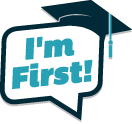This article is published in the 2014 I’m First Guide to College
Your College Search: By the Numbers
By Emily Anderer
I was woefully uninformed when I began my college search. Living in Utah, I knew about most of the universities in my state but very little about schools elsewhere. I didn’t know the difference between a public and a private college or what a liberal arts school was, and I don’t think I was even clear on the difference between undergraduate and graduate school. The most difficult part of my college search was struggling to determine the quality of colleges I had never heard about previously.
Eventually, I realized that to understand the strengths and weaknesses of a school I needed to look at its numbers and statistics. This wasn’t the most fun part of my college process, but good, solid research helped me to make informed decisions.
While everyone is looking for something different in a college, here are some factors every student should consider, along with how to interpret the relevant numbers and statistics:
Can I Get In?
Admissions Rate – The lower a school’s admission rate, the more competitive the school is considered to be to get into. For example, many selective schools have admissions rates below ten percent—only one out of ten students who apply will be admitted. It’s good to aim high and apply to some schools where the odds are you may not be admitted, but also apply to some schools where the admissions rate is in your favor.
Average GPA, SAT and ACT Range – Looking at the standardized test scores and average grade point averages of admitted applicants is a good way to evaluate the academic ability of the student body. Compare your test scores to the school’s median test scores—the 25th to 75th percentile of admitted students—to get the best idea of your odds of getting accepted.
Is It Affordable?
Financial Aid – Financial aid is money you get to make up the difference between the cost of attending a college and your family’s ability to pay. Look for schools that have need-blind admissions, through which students are admitted regardless of their ability to pay for tuition on their own.
Average Loan Debt – Some schools may appear to have great financial aid, but they may be providing much of this support through loans which must be paid back. Looking at the average loan debt will give you a sense of the financial burden you’ll have to shoulder once you graduate.
Are Students Successful Here?
First-Year Retention Rate – This percentage describes the number of enrolled freshmen who return as sophomores the following year. Be cautious if a high percentage of the student body doesn’t return for their second year. Clearly the school is not providing students something they want or need.
Six-year graduation rate – Whether students failed to graduate from a school because they transferred, dropped out, or failed to complete requirements, this is one of the most important clues to understanding whether or not students are successful. If this percentage is low, the school is not adequately supporting students to ensure graduation. Look at the graduation rate for underrepresented minority students as well. If students of color are graduating at significantly lower rates, that should ring warning bells. You can find a full breakdown of graduation rates by race, gender, and other factors at www.collegeresults.org.
Remember that college is an investment. you invest your money in getting a quality education, which will, in turn, allow you to have access to better jobs. But if a school has a high loan debt and a low graduation rate, maybe it is not the wisest investment for you.
Don’t just fall into a college because you didn’t do enough research. I’m enormously thankful that I put in the time and hard work to research, identify and gain admittance to my dream school—a liberal arts college in upstate New York that none of my family or friends had ever heard of but which was perfect for me. Don’t settle on a college just because you are unaware of what else is out there. Use the numbers to help you find a college that fits your interests and needs. You won’t regret it!
BIO Emily Anderer is a graduate of Hamilton College in Clinton, New York and past intern with Center for Student Opportunity.
